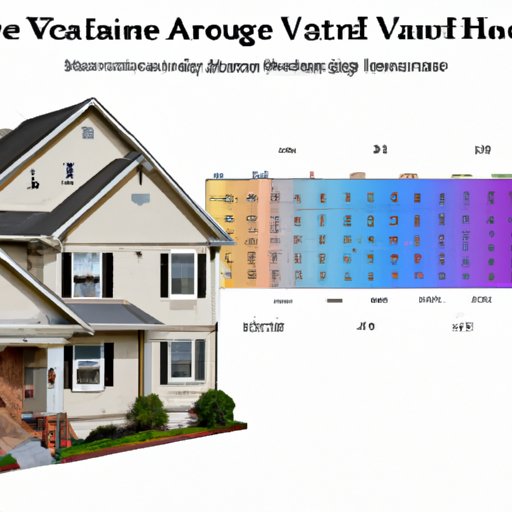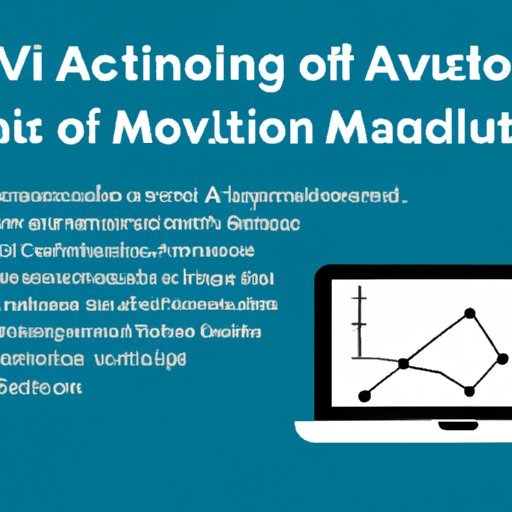Introduction
Automated Valuation Models (AVMs) are computer-generated estimates of a property’s value. These models use data from public records, such as sales prices, to generate a range of potential values for a given property. AVMs have been used by the real estate industry for decades, but have become increasingly popular in recent years due to their accuracy and ease of use.
Exploring Automated Valuation Models: What Are They and How Do They Work?
An automated valuation model is a computer program that uses data from public records to estimate the value of a property. The data includes information on comparable sales, tax assessments, and other relevant factors. The model then uses algorithms to analyze this data and come up with an estimated value for the property.
AVMs are typically used by lenders and appraisers to quickly assess the value of a property. They provide an accurate estimate of a property’s value in a fraction of the time it would take to manually evaluate the property. AVMs are also used by homebuyers and sellers to get an idea of what their property is worth before entering into negotiations.

Using Automated Valuation Models to Accurately Estimate Property Values
In order to accurately estimate a property’s value, AVMs must take into account several factors. These include local market trends, current economic conditions, and the condition of the property itself. By analyzing these factors, AVMs can provide an accurate estimate of a property’s value.
For example, a property located in an area that has seen a recent increase in home prices will be valued higher than a similar property in an area where prices have remained relatively stagnant. Additionally, a property in good condition will be valued higher than one in need of repairs. By taking into account these factors, AVMs can provide an accurate estimate of a property’s value.

Automated Valuation Modeling: What You Need to Know
There are many benefits to using an automated valuation model. For starters, AVMs provide a quick and easy way to estimate a property’s value. This allows lenders and appraisers to quickly assess the value of a property without having to conduct a full appraisal. Additionally, AVMs are highly accurate and can provide an estimate of a property’s value that is within 5% of its actual value.
However, there are some drawbacks to using AVMs. For example, they don’t take into account certain factors that can affect a property’s value, such as its location or the condition of its interior. Additionally, AVMs rely on data that may not always be up-to-date, which can lead to inaccurate estimates. As such, AVMs should be used in conjunction with other methods of estimating a property’s value.
The Benefits of Automated Valuation Modeling for Real Estate Professionals
Real estate professionals stand to benefit from the use of automated valuation models. AVMs provide an efficient and accurate way to estimate a property’s value, which can save time and money for both buyers and sellers. Additionally, AVMs can help real estate agents identify properties that may be undervalued or overvalued, which can give them an edge in negotiations.
AVMs can also help real estate agents more accurately assess the market value of a property. According to a study conducted by the Appraisal Institute, “AVMs can be used to quickly provide a credible estimate of value that is within 10 percent of the market value of a property.” This makes them an invaluable tool for real estate professionals who want to accurately assess the value of a property.
A Comprehensive Guide to Automated Valuation Modeling
When using an automated valuation model, it’s important to understand the process and know how to interpret the results. Here is a step-by-step guide to using an AVM:
- Identify the property you wish to value.
- Gather relevant data about the property, such as comparable sales or tax assessment information.
- Input the data into the AVM and run the model.
- Analyze the results and compare them to other estimates of the property’s value.
- Adjust the inputs if necessary and rerun the model.
- Review the results and make any final adjustments.
It’s also important to be aware of common pitfalls when using AVMs. One of the most common mistakes is relying too heavily on the results of the model. While AVMs can provide an accurate estimate of a property’s value, they can also be wrong. It’s important to double-check the results against other estimates and adjust the inputs if necessary.
Analyzing Automated Valuation Model Results for Maximum Accuracy
Once you’ve run an AVM, it’s important to analyze the results in order to ensure maximum accuracy. First, look at the range of values the model suggests and determine whether the range makes sense. If the range is too wide, it may indicate that the model is not taking into account all of the relevant factors. If the range is too narrow, it may indicate that the model is not taking into account enough factors.
Next, look at the individual components of the model and determine whether they are reasonable. For example, if the model is using comparable sales to estimate a property’s value, make sure the comparable sales used are similar to the property being valued. Finally, compare the results of the AVM to other estimates of the property’s value and adjust the model’s inputs accordingly.

Understanding the Different Types of Automated Valuation Models
There are three main types of automated valuation models: Comparable Sales Model, Cost Model, and Income Capitalization Model. Each type of model uses different data points and algorithms to calculate a property’s value. Here is a brief overview of each type of model:
- Comparable Sales Model: This type of model uses data from recently sold comparable properties to estimate a property’s value. This is the most commonly used type of AVM.
- Cost Model: This type of model uses data on the cost of building materials and labor to estimate a property’s value.
- Income Capitalization Model: This type of model uses data on rental income and expenses to estimate a property’s value.
Conclusion
Automated valuation models are a powerful tool for real estate professionals. They provide an efficient and accurate way to estimate a property’s value, which can save time and money for both buyers and sellers. Additionally, AVMs can help real estate agents identify properties that may be undervalued or overvalued, which can give them an edge in negotiations. With the right knowledge and understanding, AVMs can be a valuable asset for real estate professionals.
(Note: Is this article not meeting your expectations? Do you have knowledge or insights to share? Unlock new opportunities and expand your reach by joining our authors team. Click Registration to join us and share your expertise with our readers.)
